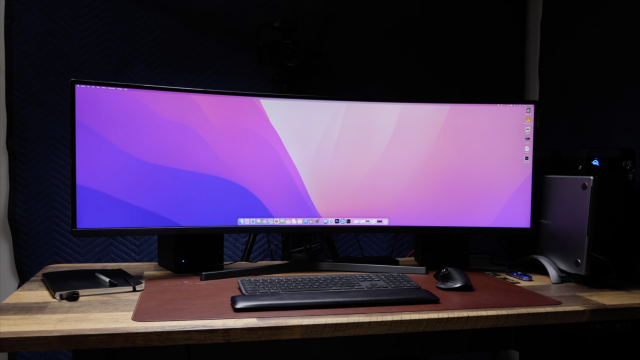Since Apple introduced the Retina display to the Mac back in 2012, most of their lineup has shipped with one of the laser sharp, pleasingly crisp screens. Whether you have a small 12-inch laptop display or a large 27-inch desktop, your Mac likely looks great. So it can be frustrating when you plug it into an external monitor, only to be presented with blurry text. What’s going on here?
Resolution and pixels make text sharp on Mac
The big reason text and graphics look so sharp on your Mac’s display is because of resolution and pixels. Apple makes very high-res displays; the M1 iMac, for example, is 4480 x 2520, which gives it a resolution of roughly 4K, with a ppi (pixels per inch) of 218. The M1 MacBook Air features a 2560 x 1600 resolution display, with a ppi of 227, which puts it somewhere in the 2.5K range.
The image your Mac sends to the display is scaled up (more on that later) to match all those extra pixels; what results is much sharper text and images, and little chance you’re going to be able to see those individual pixels.
That all looks great…on your Mac, but everything might go to crap when you connect to an external display. That’s likely either because the display you’re connected to doesn’t have the pixel count necessary to reproduce text sharply (such as a standard 1080p display), or it is a non-Apple standard resolution or display size, such as a 1440p or ultrawide display.
1080p displays don’t display sharp text
If you’re connecting to a 1080p display, I’m sorry to report that there’s not much to be done. While these displays work just fine, and can look great for some uses, they simply aren’t capable of sharply displaying text like a more pixel-dense display can. If sharp text is really important to you, you’re better off upgrading to a sharper display. As you’ll see, a standard 4K display will be the easiest solution when it comes to macOS, and should give you sharp text as soon as you connect.
However, an upgraded external monitor might not solve all your problems. A traditional 4K display should have no problems at all, but 1440p displays and ultrawide monitors can still pose issues. Maybe you have one of these, and you’re wondering why your text still looks fuzzy. A Windows laptop looks just fine connected to one of these displays; why doesn’t your MacBook?
Scaling issues can make text fuzzy on external displays
A big issue here is scaling. When you’re sending a video signal to a display (including your computer’s built-in display), you can change the size of that signal to better match the display. Let’s say you have an M1 iMac. Choosing a native 4480 x 2520 scaled resolution (which perfectly matches the resolution of the display) will make it essentially unusable. Everything is way too small. Scaling that resolution to something like 2240 x 1260 doubles the size of everything on the screen, while still matching the pixels.
On a 1440p display, you can usually choose a 1080p scaling option to retain that crisp pixel look. Not the case with Mac. For some reason, Apple makes outputting its Retina signal seemingly impossible for 1440p and ultrawide displays. macOS, unlike Windows, doesn’t have the scaling options necessary to get the job done.
How to sharpen Mac text on a 1440p or ultrawide display
If this sounds like your problem, there are a couple fixes to try. First, see if disabling font smoothing helps. While you used to be able to disable this option from System Preferences, Apple removed it with Big Sur. You can still disable it from Terminal, though.
To start, open Terminal, then copy and paste defaults -currentHost write -g AppleFontSmoothing -int 0, before hitting “Enter.” This command disables font smoothing, which can help make your text look sharper on a 1440p or ultrawide display. The controller here is the number at the end of that command; “0” disables the feature, while using 1, 2, or 3 steadily increases the intensity of the feature. You can reset the feature to default with the command defaults -currentHost delete -g AppleFontSmoothing.
If that doesn’t work, some have found success using BetterDummy. This tool allows you to create a “fake” macOS window that then becomes the main window on your external display. Using this tool, you have access to way more scaling options than macOS provides by default, which can help match your particular display.

Leave a Reply
You must be logged in to post a comment.